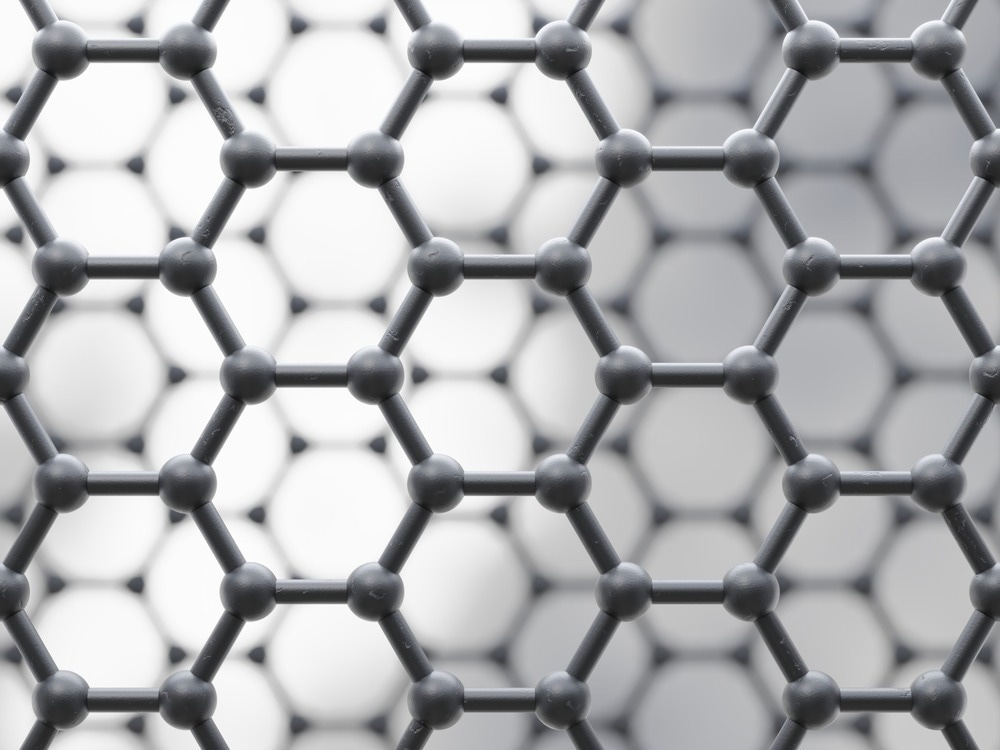2H phase stabilization in molybdenum telluride (MoTe2) during molecular beam epitaxy growth on 6H-silicon carbide (SiC) (0001) is desirable to leverage its potential properties in electronic applications.

Study: Higher-indexed Moiré patterns and surface states of MoTe2/graphene heterostructure grown by molecular beam epitaxy. Image Credit: NEW-LIGHT-VISUALS/Shutterstock.com
In an article published in the journal npj 2D Materials and Applications highly crystalline 2H phase of MoTe2 growth on graphene was achieved via molecular beam epitaxy by altering the conditions. In this van der Waals heterostructure, the electronic coupling among adjacent layers and various Moiré patterns were observed at the junction between MoTe2 and graphene layers, which was an atomically clean interface.
Furthermore, the developed single-layered MoTe2/graphene heterostructure via molecular beam epitaxy was investigated using scanning tunneling microscopy (STM) and density functional theory (DFT) calculations.
The results revealed that MoTe2/graphene heterostructure via molecular beam epitaxy amplified the Moiré potential modulations, which otherwise were weak, resulting in higher-indexed Moiré patterns. The Moiré patterns that are rich in Fourier overtones showed a wide range of applied bias voltages, showcasing the complex electronic features of MoTe2/graphene heterostructure.
Molecular Beam Epitaxy and Moiré Pattern
Molecular beam epitaxy is an epitaxy process used in thin-film single crystal deposition to fabricate diodes and metal–oxide–semiconductor field-effect transistors (MOSFETs). It is also used in laser manufacturing of optical discs
Molecular beam epitaxy is mainly used for a few organic semiconductor types, wherein molecules are evaporated and deposited onto the films rather than atoms. Molecular beam epitaxy systems are flexible for alterations as per the need. Nanostructures with atomically flat heterointerfaces are an important achievement accomplished by molecular beam epitaxy
Molecular beam epitaxy generally takes place under a high or ultra-high vacuum. The crucial aspect of molecular beam epitaxy is its deposition rate, allowing epitaxial growth of films that require a better vacuum to realize the impurity levels as in other deposition techniques.
Moiré patterns or Moiré fringes are interference patterns formed by overlapping two similar patterns involving opaque ruled patterns and transparent gaps. Moiré interference pattern necessitates two identical patterns with small displacements like rotation or alignments at slightly different pitches
MoTe2 material is a transition metal dichalcogenides (TMD) material with unique properties suitable for electronic applications. Moreover, the 2H phase has a bandgap of approximately 1 electronvolt like that of Si for its application in ambipolar field-effect transistors. Among various methods reported for MoTe2 growth on different substrates, molecular beam epitaxy is advantageous to achieving precise growth control due to the high vacuum environment, slow growth rates, and low-temperature requirements
A Moiré pattern is observed between two-dimensional (2D) heterostructures due to van der Waals forces that allow their facile relative rotation. The Moiré patterns influence the physical properties of these heterostructures. Moreover, in commensurate heterostructures with finite supercells, the supercell size appears greater than Moiré periodicity
Moiré Patterns of MoTe2/ Graphene Heterostructure Grown by Molecular Beam Epitaxy
Molecular beam epitaxy growth of MoTe2/graphene heterostructure was previously reported with good crystallinity and desired phase. This heterostructure formed Moiré patterns with different twist angles. In the present study, unusually higher-indexed Moiré patterns with commensurate supercell periodicity were observed in the MoTe2/graphene heterostructure by using STM at a rotational angle of about 30 degrees.
Generally, in heterostructures, few properties of Moiré patterns rely on the bias voltage, which affects the electronic corrugation amplitude and contrast inversion. However, in this study, the unique substantial change in Moiré periodicity was observed with bias voltage, suggesting the existence of higher-indexed patterns, wherein changing the voltage bias facilitated the selective swapping of patterns.
To this end, the combined contribution of tellurium (Te) and Mo orbitals contributed to the variability in charge density to generate different bias voltages. The DFT calculations revealed that this charge variability influenced the graphene substrate strongly. Moreover, the higher-indexed Moiré made the patterns complex and rich in MoTe2/graphene heterostructure grown with high crystalline quality via molecular beam epitaxy.
Conclusion
To summarize, a variety of Moiré structures were formed in 1H-MoTe2/graphene heterostructure with 6H-SiC (0001) graphene termination under molecular beam epitaxy growth conditions as observed using STM. Various tunneling conditions revealed three different patterns in the 1H-MoTe2/graphene heterostructures. Due to the appearance of higher-indexed Moiré patterns, distinctly complex and rich Moiré structures were observed, as predicted by Moiré theory.
The appearance of additional Moiré overtones in measurements that prevailed in the Moiré pattern at specific voltages made the electronic Moiré highly variable with the voltage bias in real-space STM images. The results obtained from STM images revealed a strong signature of commensurate supercells around 30 degrees, which were indistinct in most heterostructures.
STM simulations and DFT calculations revealed the role of the electronic coupling between the layers in MoTe2/graphene heterostructure for strong and weak Moiré potential modulations, thus explaining Moiré patterns. Due to the importance of Moiré patterns in twistronics phenomena, the higher-indexed patterns expand the Moiré physics possibilities in the van der Waals heterostructures.
Reference
Pham, T.T., Vancsó, P., Szendrő, M. Palotás, K., Castelino, R., Bouatou, M., Chacon, C et al. (2022) Higher-indexed Moiré patterns and surface states of MoTe2/graphene heterostructure grown by molecular beam epitaxy. npj 2D Mater Applications. https://www.nature.com/articles/s41699-022-00321-9
Disclaimer: The views expressed here are those of the author expressed in their private capacity and do not necessarily represent the views of AZoM.com Limited T/A AZoNetwork the owner and operator of this website. This disclaimer forms part of the Terms and conditions of use of this website.